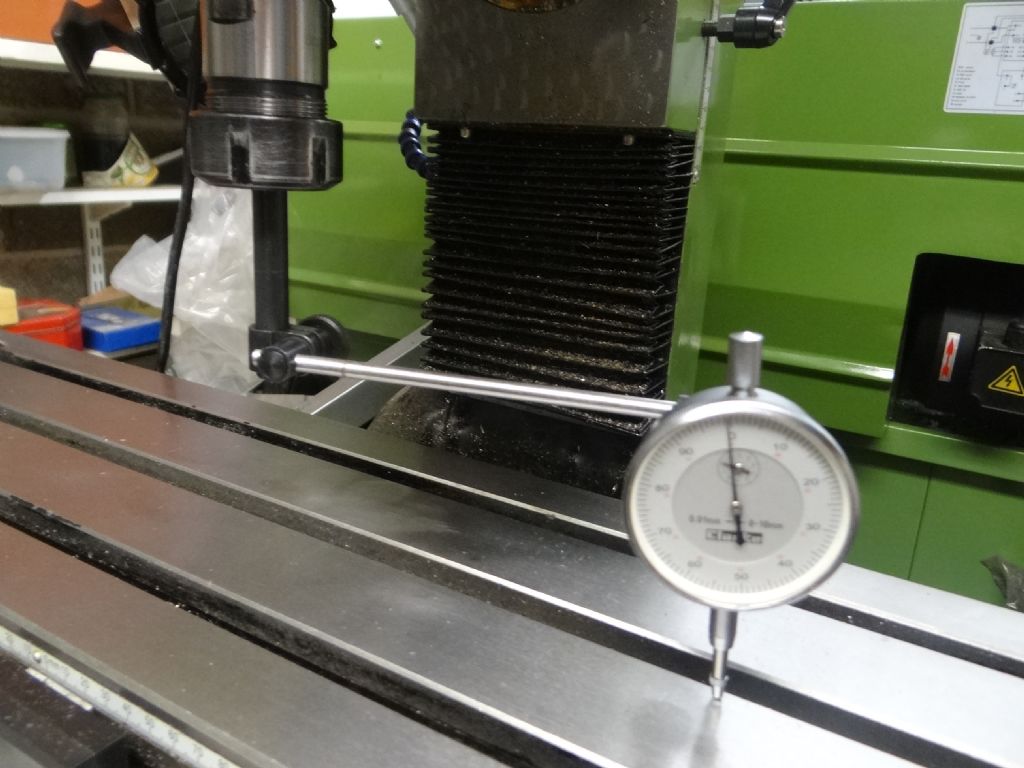Odd, I expect it's been moving due to vibration.
The ringed item is the vertical lock, which is pulled to allow the column to swivel. I've decided swivelling the head on this type of mill is more trouble than it's worth because retramming the head can be a right fiddly job – when the bolts are tightened right at the end, there's an annoying tendency for the tram to shift at the last moment, and the air turns blue. Good example of a cost-cutting measure on a hobby machine. The feature works, but is a horrid time-waster.
Re-tramming, the swivelled DTI shown below gets far better accuracy than a set-square.

The tram is adjusted so the DTI reads as close a possible to zero on both the right and left hand side of the table, when the DTI is turned through 180°. The arm provides a long baseline. Arrangements like this have to be used with care because the slightest slop gives misleading measurements. The picture is posed – in practice I stiffen it up by not using the arm at maximum extension.
Dave
Martin King 2.







